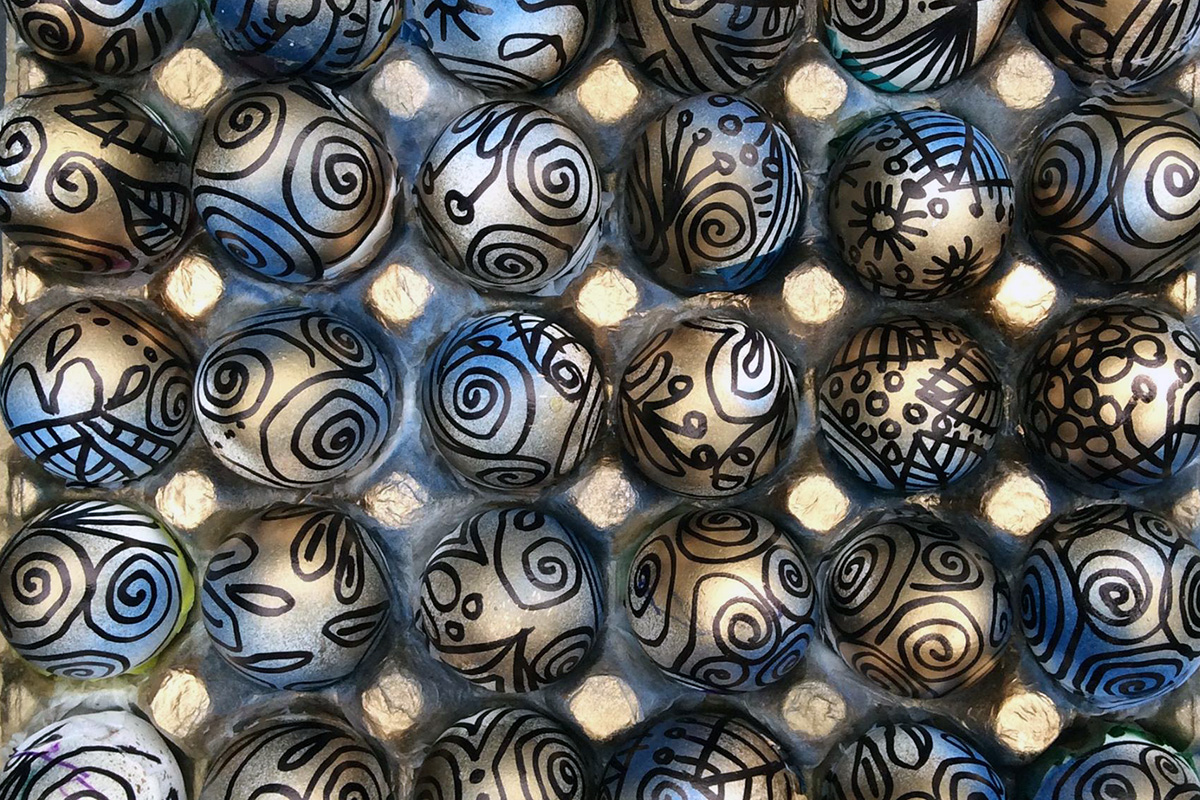I am about eight or nine, standing in the grass under a hot April sun in Laredo, Texas. My brother breaks a cascarón on my head. Bits of eggshell and confetti dance around my face and the laughter rings loud.
My entire family has gathered for our annual Easter Sunday picnic at Lake Casa Blanca, our one public park in Laredo, Texas. The Lake, as we call it, is the site of family picnics. It is a lovers’ lane. It is where school groups hold end-of-year parties, and where high schoolers go to smoke or drink beer. I imagine it was where the nomadic indigenous people of the area, the Coahuiltecan, once gathered, as we sometimes find arrowheads.

To this day, it is where hundreds of Laredo families celebrate Easter, although now it is a state park and you have to pay for the privilege, spending the night at the Lake to save a choice spot for the family picnic. This annual spring outing is reminiscent of the Romerías, the spring outings in Spain where the townspeople hike to a spot in the countryside to honor a saint or visit a hermitage with prayer and food. The Spanish settlers likely brought the tradition of the cascarones to Nuevo Santander, as this region of Northern Mexico and South Texas was called.
For the past few weeks, Bueli, my grandmother, has been collecting the eggshells from our morning breakfasts. She’s been careful to crack each egg at just one end before emptying its contents into a skillet, cooking them with potatoes or chorizo, and preparing our breakfast tacos. She and Mami have been dying the eggshells with food coloring and setting them out to dry. Then they stuff them with confetti and carefully seal them by gluing a piece of tissue paper in a color that complements or matches the pastel colors of the shells. Some of the cascarones are special as Bueli and Mami add a dime or two as a surprise. My cousin and other mischievous older kids have filled some with flour!
It takes hours of work! All for an ephemeral art that brings joy. It is an ancient practice, rooted in Europe, one that in my mind is loosely linked to the Easter Bunny, for it is La Coneja (“The Rabbit”) that brings baskets full of cellophane grass with candy: yellow Peeps, marshmallow chocolate-covered bunnies, and, my favorite, jelly beans! But the cascarones are not in the basket. They are set aside to be hidden around the picnic site so we kids can look for them and break them on each other’s heads—or even on a favorite aunt’s head who will regañar (nag) and call us huercos malcriados (spoiled kids). Her laughter undermines the severity of the scolding.



The colorful cascarones have migrated to other spring festivals, like Fiesta in San Antonio, Texas. Since the late 1800s, San Antonians have gathered to celebrate the defeat of the Mexican Army in the battle of San Jacinto on April 21. Once a one-day event that featured a “battle of flowers” parade, it has expanded to two full weeks of festivities. The signature fiesta for San Antonio, the seventh largest city in the nation, incorporates cascarones as part of its material culture.
San Antonio Conservation Society volunteers prepare thousands of cascarones that are sold to partygoers at Night in Old San Antonio, a celebration of the city’s multicultural population. Folks set up stalls along busy streets, selling cascarones to passersby for Fiesta as well as for Easter picnics. Mexican families gather at Brackenridge Park, where men spend the night relaxing, drinking, and telling jokes, engaging in the typical banter of South Texas, regaling each other with tall tales of politicians and family characters. Perhaps someone will bring a guitar and they will break out in song. While here, the families are setting a claim to a choice spot in the park’s picnic grounds for the family that will come after Easter Mass on Sunday morning.
Raised in San Antonio, artist Marta Sanchez grew up with Easter picnics and Fiesta as annual family rituals. In Philadelphia, where she moved to study art and pursue her career, she created an annual celebration called Cascarones Por La Vida. Established in 1992 during the HIV/AIDS epidemic, the idea was to raise funds to assist patients while also reinforcing a positive image of the Mexican community. Thus, through cascarones, she not only introduced and highlighted an aspect of Mexican cultural expression but turned it into a benefit for the community.


Now an organization, Cascarones Por La Vida assists families affected by the disease by selling the hand-painted, confetti-filled eggshells. They provide food, baby formula, winter coats, and taxi rides. Often, when parents are too weak to walk, drive, or take the bus, the program provides transportation. On occasion, the program has also assisted with burial expenses. Firmly established in Philadelphia, Cascarones Por La Vida has become an annual event awaited with anticipation by kids and adults alike, as the dour winter doldrums are left behind and the colorful spring cascarones appear. High school students and senior citizens volunteer to help prepare thousands of cascarones each year. The original contents of the eggs are donated to shelters and other food providers, but the fun-filled cascarones are sold at school and church festivals to fundraiser for local HIV/AIDS organizations.
Innovative use of the tradition continues. Eight years ago, Texas A&M University in San Antonio began hosting the annual Festival de Cascarones, a celebration with live music and family-friendly activities. Thus, we see the cascarones take on yet one more transformation.
Those childhood memories continue to surface as I ponder the phenomenon of the cascarones. Transformation of the Easter traditional cascarones for other purposes will no doubt continue. For now, I bask in the memories.

Norma Cantú is the Murchison Distinguished Professor of the Humanities at Trinity University in San Antonio, Texas, and a long-time collaborator with the Smithsonian Folklife Festival.


